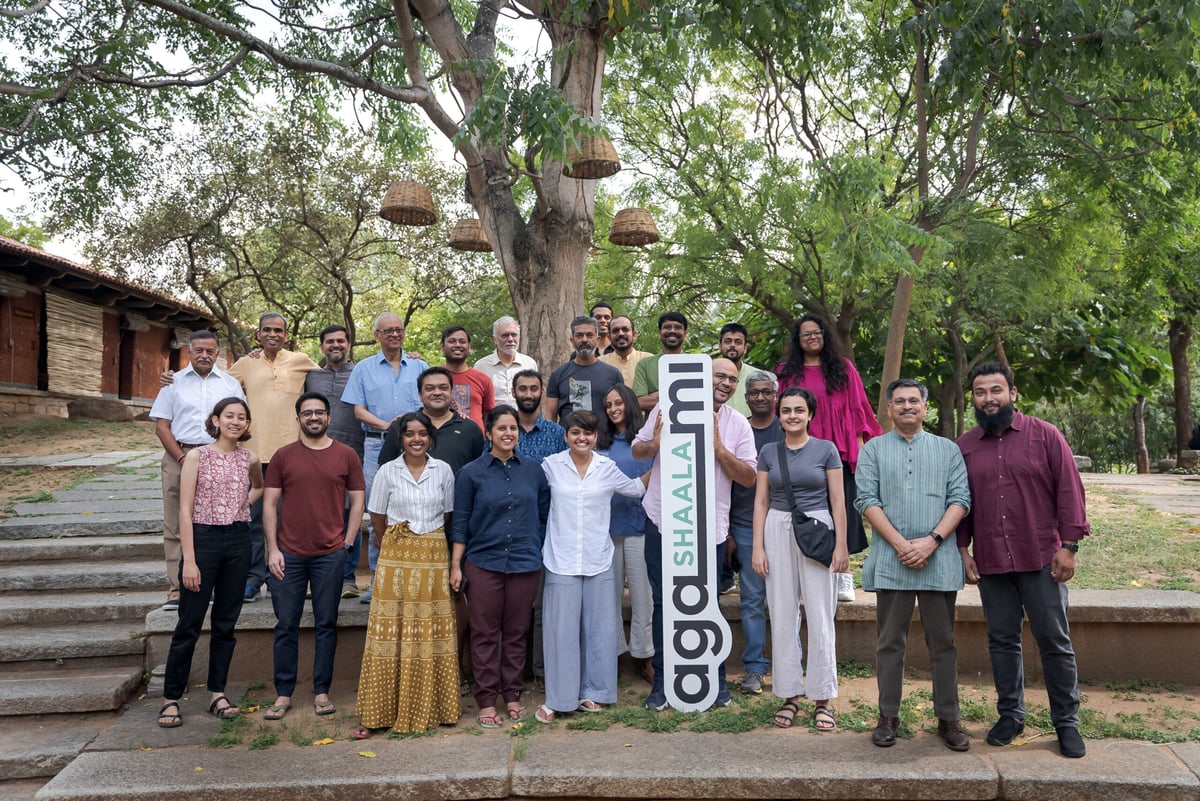What does it take to reform a flawed or broken system in society? Some would consult a group of expert problem solvers; others would bring together representatives of stakeholders from within the system in question. And some, like the founders of Agami, believe it takes a much larger community of people with diverse talents to bring about reform in any particular sector.
Agami works in the field of justice reform, with the goal of catalysing change in India’s legal and judicial systems so that an average citizen’s experience of seeking justice or dispute resolution is made faster, smoother and easier. In India, problems with the justice system have long been seen as an issue of excessive case pendency that can best be solved by judges, lawyers or other experts familiar with how courts work. But Agami chose to move away from what co-founder Supriya Sankaran describes as an “insular” approach to problem solving. Instead, it opened its field of reform work to a whole community of diverse changemakers – or “justicemakers” – from different walks of life.
Today, Agami’s work in collaboration with other partners has led to the creation of at least three major reformative platforms: Online Dispute Resolution (read more about it in our blog here), PUCAR (a mission that reimagines how courts can function) and OpeNyAI (which leverages Artificial Intelligence to transform how people experience justice).
But to carry out work under these three verticals, Agami invests a large part of its time and energy into what Sankaran calls the “horizontal” work of community building. Through large annual gatherings like “Agamishaala” and the “Justicemaker Mela”, Agami brings together changemakers from vastly different backgrounds, giving them the space and opportunity to build connections, find common ground and innovate new ideas in the sphere of justice reform.
In this brief interview, Sankaran tells us about importance of building such a community to carry out reform work, and how Agami goes about doing it:
Who are the changemakers in Agami’s community, and why is it important to bring them together?
Fundamentally, these changemakers or justicemakers are people frustrated with the way things are, who have some imagination of what could be better, and who have a sense of agency and belief in themselves that they can be a part of the solution. We call them ‘bright spots’. They could be people within the non-profit sector, government, or private sector. Some of them are the usual suspects – grassroot organisations, people from policy think tanks, technologists, developers – but also people like superintendents of certain prisons who have been driving new programmes in their jails, or a general counsel in a company who’s trying to do something differently within their business. Changemakers could also be musicians, artists, designers, freelancers – people who are ready to step into the field, be a part of something bigger.
It is important to bring them together because often many of us operate from our own vantage points. What you are contributing to and who you could potentially work with is very limited if you don’t have an opportunity to meet people from wider vantage points of what justice is.
When you create a safe, neutral space for people with very different perspectives to make unlikely connections and collaborations, you find allies you could potentially work with.
You also get a vantage point of the field as a whole, and can shape what you are doing on your own differently. And most importantly, having a community gathering injects people working on justice with hope and inspiration.
How does Agami get diverse stakeholders to form a community?
The way we do it is by getting some kind of a shared purpose or intention at the centre. For example, we say, let’s make online dispute resolution a thing in India, or let’s transform how courts function, or let’s transform how grievance redressal happens in India. It is important to frame and re-frame problems and articulate your purpose in a way that is inviting to more people.
We don’t have a formula for how we build a trusted community, but we ensure that people feel that the work we do belongs to everybody – that it’s not Agami consulting a group of people for an idea. When it’s a community, the sense of shared ownership is very important. So PUCAR and OpeNyAI are not Agami’s programmes – they are separate missions with separate assets that all partners can own. We create fluid roles between each other so people feel that their strengths are leveraged and complementary with others. The diversity of the community is very important.
What can other reform movements learn from your approach?
I think most organisations have some group of people they define as community. Everyone has a sense of the people they have a shared purpose with. Agami is definitely not the first to do it, but it’s about how we do it, who we bring together, and how we leverage that community which is kind of different. I think the way we centre it around big bold ideas that could potentially have national impact, that can be operated at scale, and then rally groups of people around that call to action, is maybe what’s different. Especially in the law and justice space, it has been somewhat unusual. We felt that one of the reasons why the legal and justice system is stuck is because it is very insular and has only the experts in it, and we can’t innovate unless we bring new actors and new ideas in the field. For us it was very important to bring in people whose connection with justice we could see, but who don’t necessarily self-identify as working on justice.
Photo by Agami.
